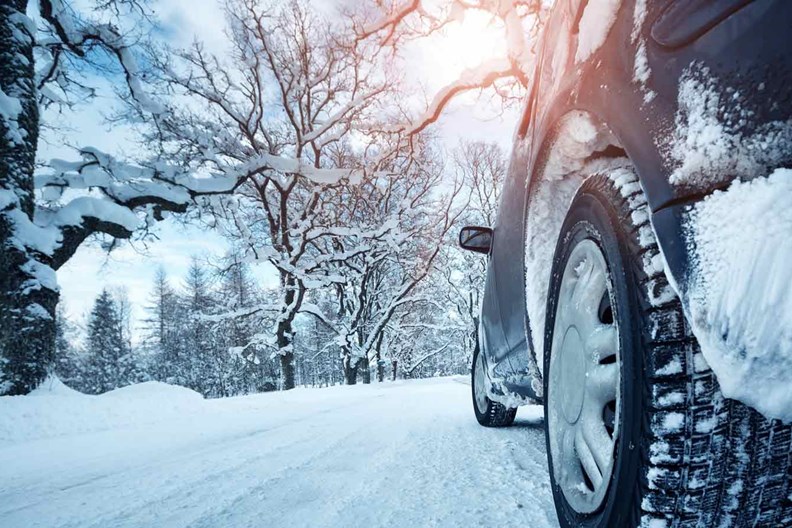- Home
- Client Zone
- Winter Tips: Driving
Winter Tips: Driving
Winter is the season that requires drivers of all vehicles to take the most care. No matter whether it’s snowing or raining, drivers need to be prepared.

Winter Tips
Be prepared
Drivers need to be prepared to minimise the risk of having an accident in winter conditions. Leave yourself more time to prepare before setting off in your vehicle in poor conditions:
- Ensure that your lights are working, clean and snow free. Keep reflectors clean too
- Do not start a journey until snow and ice is cleared off all windows and mirrors
- Clear snow off the vehicle roof to prevent snow sliding down on your windscreen during braking and making road conditions worse for other drivers
- Before you set off, ensure that your windows are demisted
- Battery problems are the most common cause of winter breakdowns - ensure vehicle batteries are in good condition
- Plan your route so you can stay on major roads as much as possible
- Listen to weather forecasts and travel bulletins
- Adjust your schedule to allow for longer travelling time
Keep a clear view
When the vehicle is parked overnight when sub zero temperatures are expected, make sure the wipers are switched off in the park position. If the blades are not on park position, they will move on ignition and may be damaged if they are frozen to the windscreen.
Ensure that there is windscreen washer fluid in the windscreen wash reservoir to prevent the water freezing so you can clean your windscreen when you need to.
Get a grip
Make sure that tyres have at least 3mm of tread and ensure the air pressures are in line with manufacturers recommendations.
It is not often that snow chains are needed but if you do use them, ensure that you are conversant with their use and remove them when you get to a road without a significant covering of snow.
Rear wheel drive vehicles operate better on snow and ice if there is additional weight in the boot of the car.
Driving tips
Snow and ice
- Use dipped headlights when driving through falling snow
- Make stopping distances ten times longer than in good driving conditions
- Plan ahead and drive smoothly - make acceleration, steering and braking as gentle as possible
- Drive slowly using the highest gear possible. When driving automatics, use the winter setting (if there is one) as this will help reduce wheel spin
- Use the gearbox in manual vehicles to slow down by braking smoothly and gently
- Be wary of skidding and losing control, even if the road is treated
- If your vehicle starts to skid, steer gently into it - for example, if the rear of the vehicle slides to the right, steer to the right. Do not stamp your foot on the brake
- Try to stay on fresh snow as this will provide more resistance than compacted tracks left by a previous vehicle
Rain
- When driving in the rain, use your dipped headlights
- Make stopping distances twice as long as in good driving conditions
- Plan ahead and drive smoothly - make acceleration, steering and braking as gentle as possible
- If your vehicle starts to aquaplane, take your foot off the accelerator and slow down to let the tyres make contact with the road surface. Do not stamp your foot on the brake
- When roads get flooded, avoid the deepest water near the curb. But if the water appears too deep, find an alternative route. Always check your brakes afterwards.

